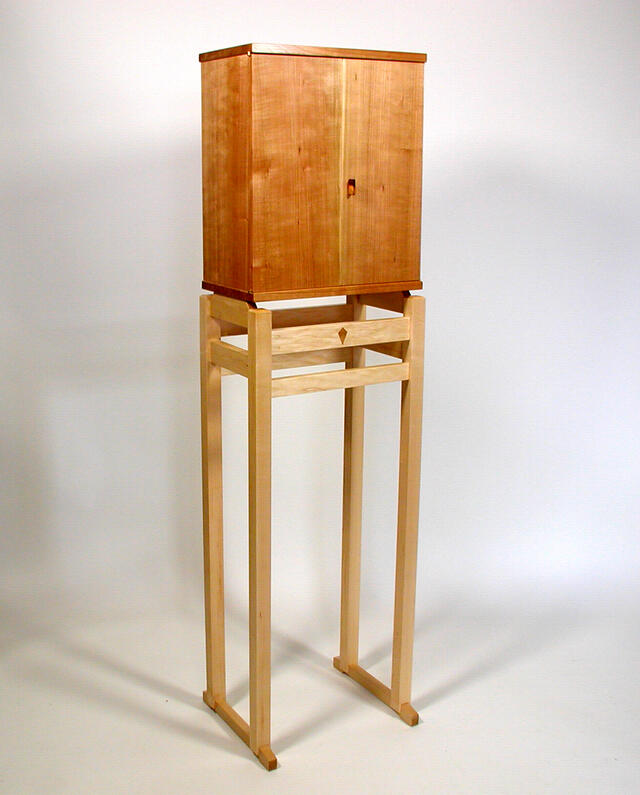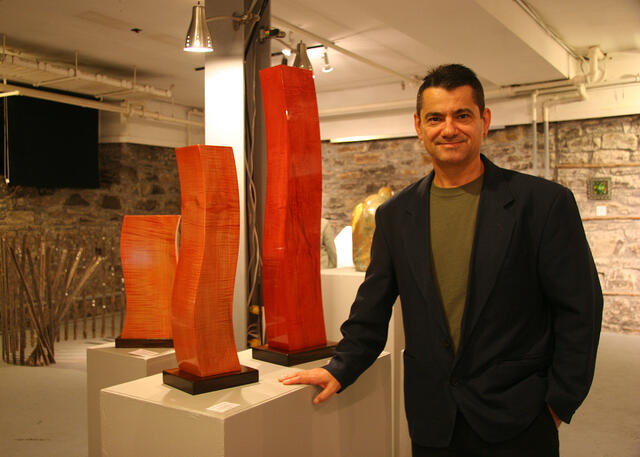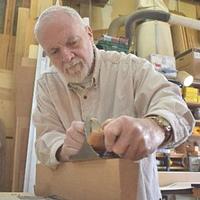
Martin Sojka
in over 11 years
Craftisian Interviews #2: Norman Pirollo
This is
part 2
in a
2 part
series:
Craftisian Interviews
-
ZacBuilds
-
Norman Pirollo
- ZacBuilds
- Norman Pirollo
Q: When you first started working with wood, what was your inspiration/goal?
My former career was in hi-tech, the computer industry to be specific. Although I embraced the fast-paced challenges, I soon realized something was missing in this work. Having worked with tools in my youth, I discovered the missing component could be fulfilled through a creative outlet. At the time, my only inspiration was to simply create tangible objects using my hands. I chose wood as a medium since I had exposure to this in my youth working in my father’s small workshop. The journey began with a Beginner’s Woodworking class at a local college. I had not defined a goal at this point and was simply content with creating initial projects. Little did I know that this first woodworking class was formative to a lifelong passion that continues to excite and motivate me today!

Q: There are so many different types of woodworking, as your journey progressed did you find that you had a particular process that kept drawing you in?
As a beginning woodworker, I was content with simply creating. In that period there were few woodworking books available, so I tended to gravitate to textbooks used in my early woodworking classes. Books by James Krenov and Tage Frid were part of the curriculum and I studied these from cover to cover. Embracing challenges is in my nature so I was drawn to processes involving intricate joinery and detail that these masters described. In my journey, I also learned to embrace hand tools over machines.
Through later studies at a furniture making school and the teachings of James Krenov, I developed hand tool skills while slowly migrating away from machines. I also developed processes to make efficient use of hand tools. Perfecting my hand tools skills and methods of work helped disprove the myth that hand tools are slower than machines.
As a result, hand tool processes and methods continue to draw me in. Machines instead excel at batch production and repeatability.
I would also like to mention that I diverged into wood sculpture for three years of my journey. I wanted to be temporarily removed from the confines of furniture making and instead experiment with free-form organic forms that were not based on geometric dimensions. I am glad to have gone off on this tangent as it helped develop my artistic side and greatly improve my veneering processes. I apply veneers to most of my work today, typically as the focal point of the furniture piece.

Q: What would you say is the underlying passion and purpose to your woodworking?
To this day, the process of creating fine furniture from rough wood planks continues to fascinate me. I am passionate about creating unique, contemporary furniture pieces that evolve from a simple sketch and drawing. As an avid reader, I enjoy reading not so much the technical aspects of furniture but the background and philosophy of well-known makers. I gain purpose from understanding how other makers approach their work. I often see many parallels to my own furniture making and this might explain a camaraderie. Over time I have also developed a style and voice that people associate to me, adding to the purpose.
Q: You have many extraordinary pieces; which one is your favourite? And why?
Several of my pieces are my favorites but one that stands out is the Standing Tall cabinet. I probably spent the most time creating this furniture piece and continue to enjoy it after many years. The quarter-sawn cherry was carefully selected and completely worked using hand tools. I was highly influenced by the work of James Krenov in these years and applied many of his design principles to this piece. It was my statement piece for a while until I created other furniture pieces. The dimensions and proportions of Standing Tall also lend well to portability. I could separate the cabinet from the stand, set up and demonstrate it at lectures, meetings and presentations on furniture making.

Q: Let’s get practical for a moment: Do you have a favourite type of wood to work with? Because ….
I enjoy working with Cherry and love how it develops beautiful color through natural aging. Cherry, although a hardwood, works well with hand tools such as chisels and plane irons. I tend to prefer fine or closed-grained woods over open-grained woods due to the fine texture. Early on I would favor more exotic woods such as Mahogany but soon found that the interlocking grain posed a problem with hand tools. Instead, I sought out domestic woods which were favorable to hand tools. Maple is another favorite as a light-colored wood with a fine texture.
Q: We talked about passion and purpose, what about dreams: do you have something in your list for “someday”, a dream item to build?
I tend to gravitate towards statement pieces with a focal point that draw people to the furniture. The wood graphics of cabinet doors in recent pieces fulfills the criteria. I often seek an innovative method of showcasing the beauty of wood in my furniture. It is not so much a specific piece of furniture that I dream of, but furniture incorporating unique elements that create an exciting aesthetic.
Q: Why is that dream item on the someday list and not the “to do” list for now?
Returning to how I love challenges in my work, I seek this in all my future furniture pieces. To maintain the challenge, showcasing how beautiful wood can be formed into furniture will always be on the list. As my woodworking and furniture making journey continues to evolve, I continue to incorporate “new to me” elements in my furniture pieces. Small, subtle changes in my furniture designs stoke my imagination and continue to challenge me.
Q: Last question: looking back, looking in, and looking forward, what are you grateful for, in regards to your woodworking journey?
In the middle of my woodworking journey, I delved into and explored an educator role. I wanted to share my knowledge of woodworking, furniture design and making with novice woodworkers. Years of cumulative knowledge and expertise led me to the educational component of woodworking. Today, I combine an educator role with furniture making through www.woodskills.com. Over the years, I have taken the time to author books, develop woodworking courses and help the woodworking community to grow. Interestingly, this teacher role engendered me to vastly improve my woodworking skills.
To fulfill my ambition of mastering woodworking, I pursued studies at a fine furniture making school. I am grateful to have attended this school at the right time in my woodworking journey as it completely changed my outlook on furniture making. I learned to slow down, to focus on the wood itself and appreciate detail. I learned to move away from the notion of quantity and instead focus on wood selection with an emphasis on quality and detail. With the resulting new work and teachings, I feel validated as a furniture maker.
Thank you for taking the time to do this interview, sharing your story, and thank you for letting us into your world through the inspiration of your creations, your craft.
Martin Sojka, Maker of Craftisian
3 Comments
Norman,
Thanks for sharing. It was nice to get to know you a little better.
L/W
“Those who would give up essential Liberty, to purchase a little temporary Safety, deserve neither Liberty nor Safety.” Benjamin Franklin
you have an interesting and unique body of work ,thanks for sharing your story.
woodworking classes, custom furniture maker
Your work is beautiful and unique. Thanks for sharing your story
Anna











